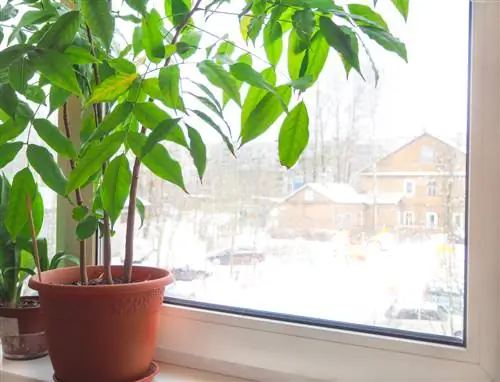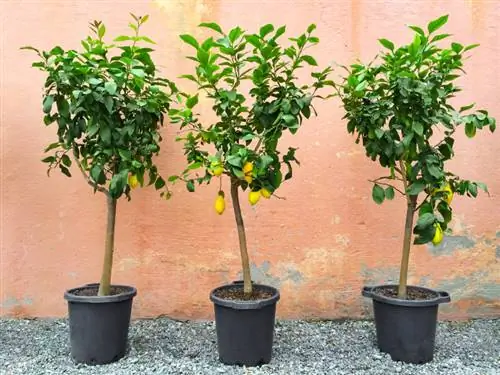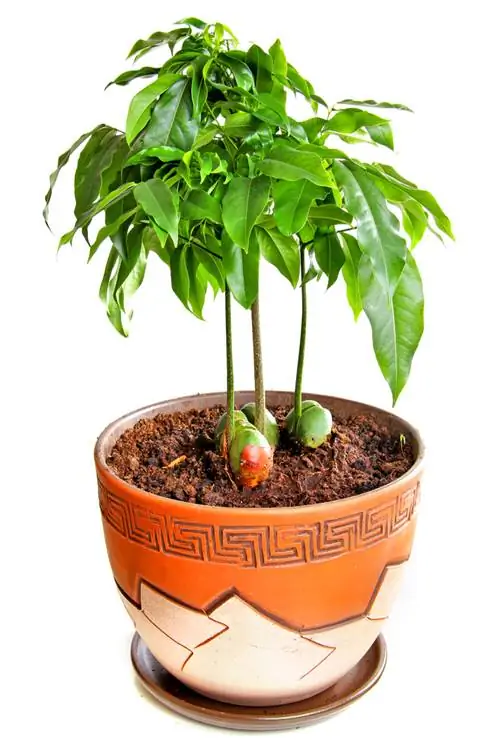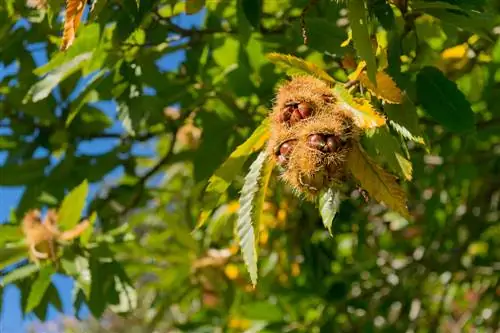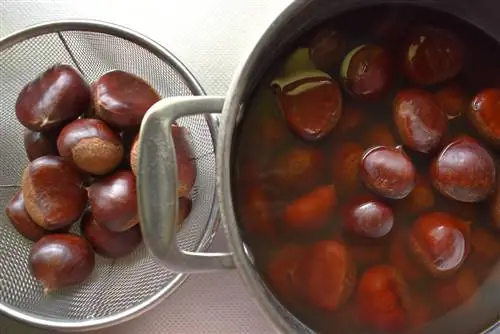- Author admin [email protected].
- Public 2023-12-16 16:46.
- Last modified 2025-01-23 11:21.
As is common with practically all houseplants, regular repotting is also recommended for the Australian chestnut. Young plants should be given a new planter every spring. Choose it according to the size and expected growth of the plant.
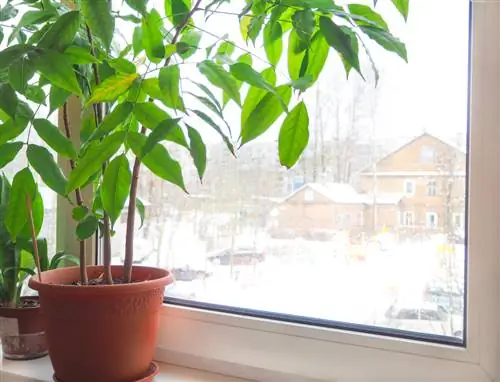
How often and how should I repot my Australian chestnut?
Australian chestnuts should be repotted annually for young plants and every 2-3 years for older plants. Choose a suitable planter, create a drainage layer and use nutrient-rich, permeable substrate with sand, gravel or cactus soil.
If the Australian chestnut is older, then only repot it every two to three years. If you want to keep the plant small, you may want to avoid repotting it into larger containers altogether. However, that doesn't mean you shouldn't replace the soil anymore. To thrive and maintain he alth, the Australian chestnut needs sufficient nutrients.
When is it time to repot?
If you don't want to keep your Australian chestnut small due to limited space, then repot the plant as soon as the root ball fills the old planter. With good care, the Australian chestnut can grow to a height of around 1.80 meters even indoors. Accordingly, the plant needs a sturdy container. It should be stable and heavy enough.
Another reason for repotting is soil that is exhausted or too firm. Your Australian chestnut will not feel comfortable there in the long term. Their leaves may dry up or fall off. In this case you don't need a new planter, just replace the old soil with fresh substrate.
What do I have to consider when repotting?
To ensure that your Australian chestnut stands securely, match the size and weight of the container to the plant. Place a drainage layer in the planter to prevent waterlogging and thus root rot. A few old pottery shards are completely sufficient. The new substrate should be well-drained and nutrient-rich. Mix some sand, gravel or cactus soil into standard potting or potting soil (€10.00 on Amazon).
The most important tips for repotting:
- Repot young plants annually in spring
- Old plants about every 2 to 3 years
- You may want to avoid repotting if you want to keep it small
- Choose planter according to plant size
- Don't forget the drainage layer (pottery shards or coarse gravel)
- If necessary, loosen the soil with sand, gravel or cactus soil
Tip
With a small planter you limit the growth of your Australian chestnut, so you have to prune the plant less often.

